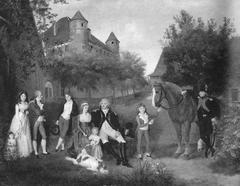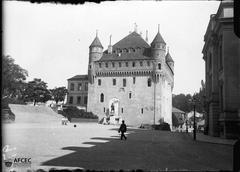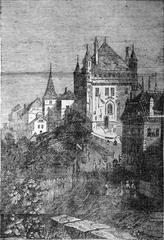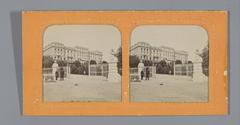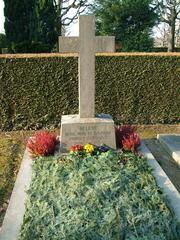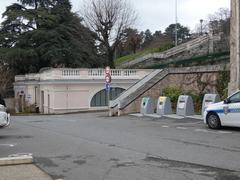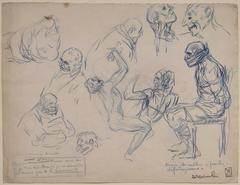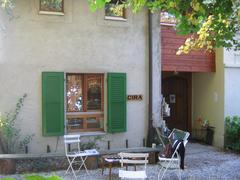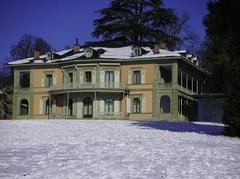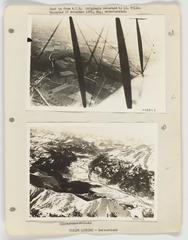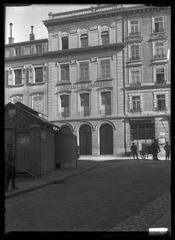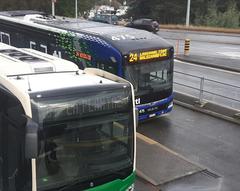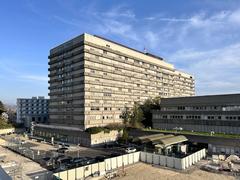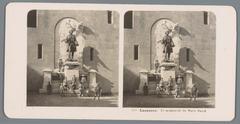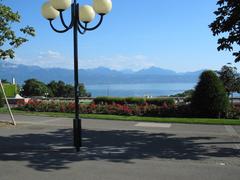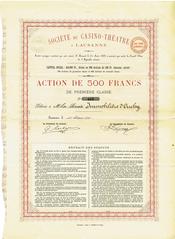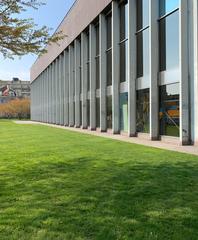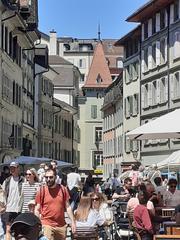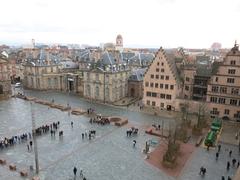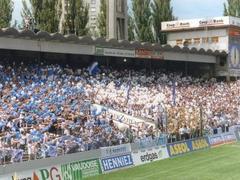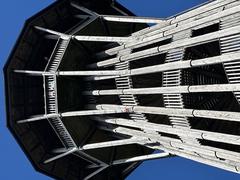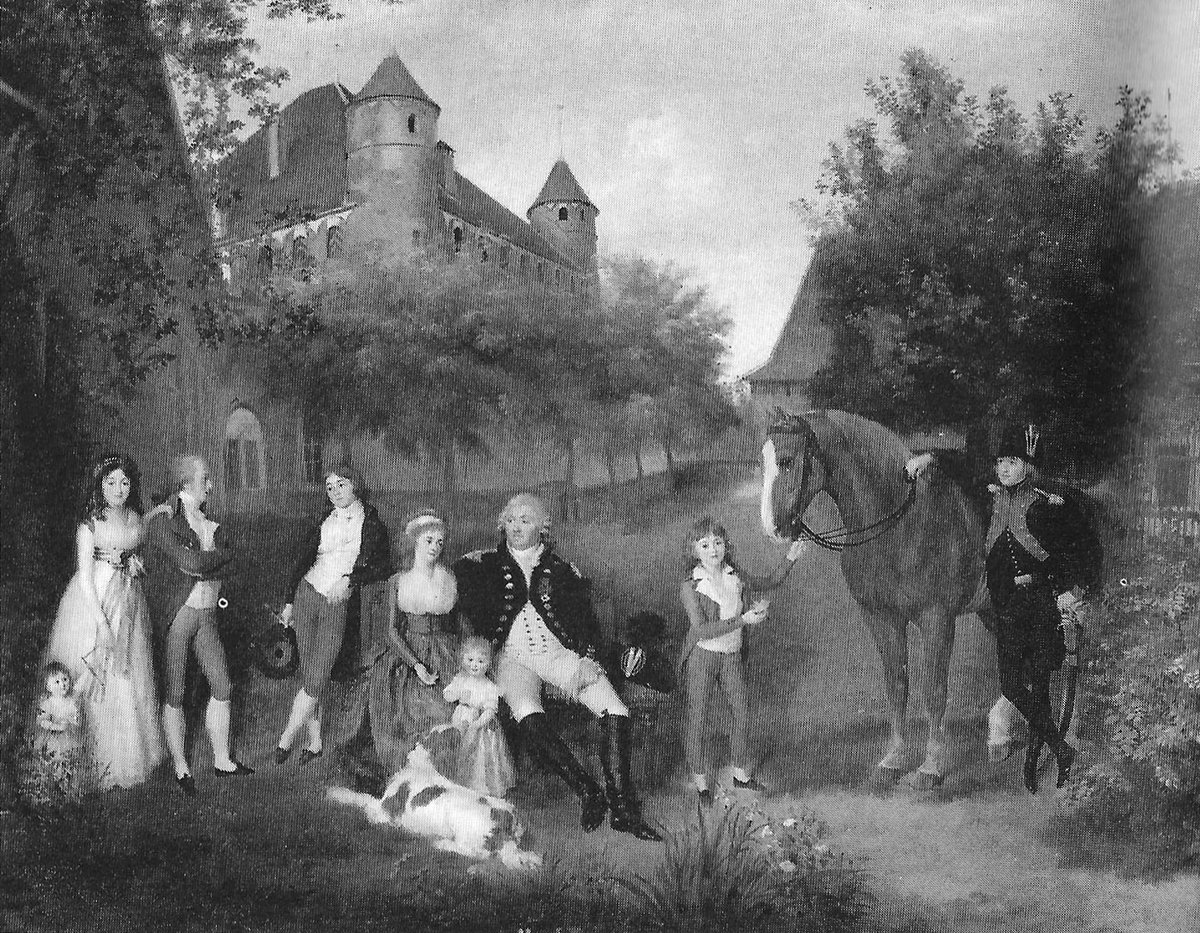
Château Saint-Maire: Visiting Hours, Tickets, and Historical Sites in Lausanne
Date: 14/06/2025
Introduction to Château Saint-Maire in Lausanne
Château Saint-Maire stands majestically atop Lausanne’s Cité hill, representing centuries of religious, political, and architectural history. Constructed between 1397 and 1430 as a fortified episcopal residence, the château played a pivotal role in Lausanne’s emergence as a cultural and administrative center (vd.ch). Its journey from ecclesiastical stronghold to the seat of the Canton of Vaud’s government since 1803 makes it unique among European castles, as it remains an active hub of governance (lausanne.ch; fr.wikipedia.org).
Architecturally, Château Saint-Maire is distinguished by its robust molasse sandstone and red brick construction, Italian-influenced features, and panoramic outlook over Lausanne and Lake Geneva (myvaud.ch). Though regular public access is limited, special events and heritage days provide rare opportunities to explore this living monument’s storied interiors (lausanne-tourisme.ch; Cityzeum). This guide details the château’s evolution, architectural highlights, practical visitor tips, and how to make the most of your experience, whether admiring its silhouette or attending a special event (vd.ch PDF).
Table of Contents
- Historical Overview of Château Saint-Maire
- Architectural Design and Features
- Visitor Experience and Practical Information
- Cultural and Political Significance
- FAQs
- Summary and Visit Tips
- References and Further Reading
Historical Overview of Château Saint-Maire
Origins and Early History
Château Saint-Maire owes its name and foundation to Saint Marius (Maire) of Avenches, who moved the episcopal seat to Lausanne in the 6th century (fr.wikipedia.org). The need for a fortified episcopal residence led to the construction of the château on the site of a former priory in the late 14th century (vd.ch PDF).
Medieval Development and Bernese Era
Under Bishops Guillaume de Menthonay and Guillaume de Challant, the castle’s construction (1397–1430) yielded a massive rectangular keep with four towers, dry moat, and drawbridge—emphasizing both defense and prestige (en.wikipedia.org; lausanne.ch). After the Protestant Reformation and the Bernese conquest in 1536, the château became the seat of the bailiff and an armory, undergoing significant modifications (vd.ch PDF).
Revolution, Restoration, and Modern Use
In 1803, after the Vaudois Revolution and Canton of Vaud’s establishment, the château became the seat of government. 19th-century renovations added neo-Gothic elements while preserving medieval features (vd.ch). Recognized as a Swiss heritage site, it continues to host the Council of State, affirming its living institutional role (lausanne.ch).
Architectural Design and Features
Materials and Influences
Château Saint-Maire is built primarily from local molasse sandstone and distinctive red brick, the latter reflecting the influence of Italian master builders (myvaud.ch). The rectangular plan, four corner towers, and battlements evoke late medieval fortress typologies, and its elevated site provides commanding city and lake views.
Defensive and Residential Elements
The castle’s architecture balances military and residential functions:
- Defensive features: Arrow slits, machicolations, fortified walls, and battlemented towers (myvaud.ch)
- Residential aspects: Larger windows and comfortable quarters for bishops, later adapted for government offices
- Interior highlights: Vaulted ceilings, stone fireplaces, and a great hall for official gatherings
Restoration and Preservation
Restoration efforts emphasize structural reinforcement, material conservation, and sustainability. Traditional materials and techniques are used to maintain authenticity, while modern adaptations for safety and accessibility are discreetly integrated (savingcastles.com).
Visitor Experience and Practical Information
Visiting Hours and Tickets
- General Access: The château functions as a government building and is not open for regular public tours.
- Special Events: Access is possible during occasions like the Festival de la Cité and European Heritage Days; entry is often free but may require advance booking (lausanne-tourisme.ch; Cityzeum).
- Exterior Viewing: The grounds and exterior can be admired year-round, 24/7 (TripHobo).
- Guided Tours: Offered only during select events; check official sources for updates.
Accessibility and Directions
- Location: Place du Château, 1002 Lausanne, Switzerland (Trip101)
- Getting There: Short walk from Lausanne’s Old Town, Metro M2 to Riponne–Maurice Béjart, then uphill on foot
- Accessibility: The uphill approach and historic structure pose challenges for those with limited mobility; contact the tourism office for advice
Nearby Attractions and Events
- Lausanne Cathedral: A Gothic masterpiece adjacent to the château
- Place de la Palud: Historic square with local markets
- Olympic Museum: For sports history enthusiasts
- Festival de la Cité: Annual July event with performances and rare castle access (Festival de la Cité)
Photography, Tips, and Amenities
- Photography: Exterior shots are encouraged; interior photography is restricted
- Best Times to Visit: May–September for pleasant weather and festival season (Global Highlights)
- Footwear: Comfortable shoes recommended for cobblestone and hills
- Dining and Accommodation: Nearby restaurants such as La Brasserie de Montbenon and hotels like Beau-Rivage Palace (TripXL)
Cultural and Political Significance
Symbolism and Public Life
Château Saint-Maire’s uninterrupted function as the seat of government for over six centuries is rare in Europe (vd.ch, p.13 and p.19). Its architecture, political symbolism, and frequent use for official ceremonies reinforce its status as the heart of Vaud’s civic identity (lausanne-tourisme.ch).
Heritage Conservation
Preservation efforts have uncovered archaeological remains, such as the old cantonal mint, and prioritized sustainable restoration. The château’s ongoing political and cultural roles are balanced with public engagement through special events and heritage days (savingcastles.com).
FAQs
Q: When can I visit the interior of Château Saint-Maire?
A: Interior access is available only during special events or heritage days; the exterior is viewable year-round (lausanne-tourisme.ch).
Q: Are tickets required for entry?
A: Special events are typically free, but may require advance reservation.
Q: Is the château accessible for visitors with disabilities?
A: The terrain and building may limit accessibility; check with tourism offices for details.
Q: Can I take photos inside?
A: Interior photography is generally restricted; exterior photography is allowed.
Q: What are the nearby attractions?
A: Lausanne Cathedral, Place de la Palud, and the Olympic Museum are all within walking distance.
Summary and Visit Tips
Château Saint-Maire is a powerful symbol of Lausanne’s layered history, blending medieval architecture, political tradition, and living civic life. While its primary function as the cantonal government seat restricts regular public access, special events and festivals offer rare glimpses inside. The castle’s striking exterior, panoramic vistas, and proximity to other historic sites make it an essential stop for travelers. To maximize your visit, plan ahead using official tourism sources, wear comfortable shoes, and supplement your experience with virtual tours or walking guides (vd.ch; myvaud.ch).
For current information on visiting hours, events, and cultural activities, consult Lausanne Tourisme and consider downloading the Audiala app for guided walking tours and event updates.
References and Further Reading
- Château Saint-Maire: A Historic Landmark in Lausanne – Visiting Hours, Tickets, and Visitor Guide, 2025
- Wikipedia contributors, Château Saint-Maire, 2025
- Lausanne City Heritage - Château Saint-Maire, 2025
- Château Saint-Maire Visiting Hours, Tickets & Architectural Highlights in Lausanne, 2025
- Cultural and Political Significance of Château Saint-Maire, 2025
- Visiting Château Saint-Maire: Practical Information and Events, 2025
- Restoration and Preservation Practices, 2025
- Local Tourism and Event Information, 2025
Discover the living history of Lausanne at Château Saint-Maire. Whether you visit during a festival or simply admire its commanding profile, this remarkable castle offers a window into Switzerland’s civic and cultural legacy.
